by Glenn | Jun 29, 2014 | Crime, General, Law Enforcement, Life
When I asked “Ringo” DeLeon, President of the Texas Gang Investigators Association, why he worked in a gang unit, the 26 year veteran and Sergeant from Corpus Christi P.D. never hesitated with his reply: “I hate bullies.” Short, to the point, yet prolific when given thought.
Say the word “Bully” and generally the first image that comes to mind is of a punk kid at school harassing a quiet, mild mannered kid. Bullies come in all shapes, sizes and sexes. They can be a boy or girl, young or old, man or woman, an individual or a group, from any race, and be rich or poor. Last year several incidents occurred with upper-middle-class high school girls bullying female classmates to the point that they committed suicide. They bullied because it made them feel good. Kids who enjoy bullying others are screwed up. Adults that enjoy bullying others are screwed up. That is the quick Psych 101 course synopsis.
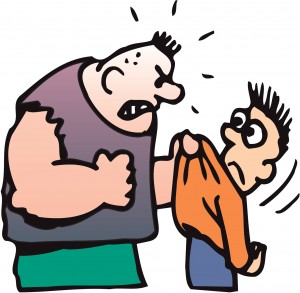
Who says I need an education?
Bullying ranges from schoolyard intimidation to spousal abuse to drug cartels’ murderous acts. Yes, drug cartels are bullies, dangerous bullies, but bullies nonetheless.
So, how does this relate to gangs? Simple. Gangs are just another level of bullies that get off on violence toward others in order to achieve their goals—and they feed off of the fears of everyone they come in contact with. Power and Control: the key essence of gangs.
Do you have gang problems in your neighborhood, community, or city? The answer is ‘yes’, only you may not be aware of the full extent of their presence. If you answered ‘no’ then you either live atop a mountain in a monastery or you keep your head buried in the sand to avoid accepting reality. Some towns and cities have gang presence more than other regions, but the problem is out there and it’s all too real.
There were 850 attendees at the Texas Gang Investigators Association (TGIA) conference held the week of June 23rd in San Antonio, Texas. The men and women came from local, state, and federal law enforcement agencies. Their ranks varied as much as the sizes of their departments. While some attendees were from formal, dedicated gang units, others were from patrol divisions whereby you have to be the “Jack-of-All-Trades and Master of None.”
TGIA provides them with 31 continuing education hours for their state license, up to date training, and the latest intel on the evolution of gangs and cartels. The criminal world of gangs is a constantly changing environment that requires continual modification of law enforcement tactics.
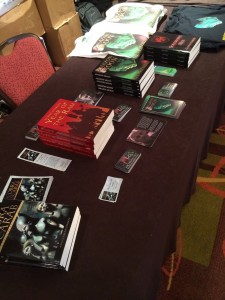
Novels by Glenn Starkey
TGIA honored me for the third year in a row by inviting me back to sign and sell my books, and be with my former brotherhood. It was an honor I definitely do not take lightly.
Throughout my two days at the conference I met old friends, made new friends, and happily learned I had loyal readers of my novels anxiously awaiting more. Erik Larson, the author of Lone Star Daybreak and an attendee of the conference, was present and we had a great talk about the world in general. But with each conversation held, I casually asked a question to get a general consensus: “What do you think is the main problem coming from gangs?” The basis of every answer was always related to drugs—drug cartels, drug money, drug deals, drug transport, and drug violence.
Small gangs primarily finance their growth through drug sales and consolidating territorial controls through mutually benefitting agreements with other gangs. As they grow, their operations expand into human trafficking, prostitution, robberies, fraud, home invasions, burglary, auto theft, murder and assassination contracts, alien
smuggling, extortion, and more. They recruit teenage girls through the Internet then force them into prostitution, using them locally, or trading and selling them off to other gangs across the country. Runaways are excellent targets, grabbed off the streets of major cities and most are never seen again.

Forced Prostitution and Human Trafficking
How can law enforcement compete against the high flow of drug money? Cocaine alone is a $30 billion a year business. Most agencies can barely fund their principal divisions of patrol and detectives, much less specialized units such as gangs. Citizens don’t realize that the majority of law enforcement agencies in America consist of 30-50 personnel at the most, if they are fortunate to have that many. And the temptation of making more money in a few hours than you will make in a year has been the downfall of many a man and woman.
Ever heard of “narcotecture?” Cartel drug kings have so much money that like the super rich oil Arabs who make everything from gold, including their commodes, the Cartel kings have special made mausoleums constructed with imported Italian Marble, gold fixtures, and air-conditioning. Air-conditioning! For a mausoleum! These incredibly ornate tombs started the term “narcotecture.”
America is the largest consumer of drugs. Coke (not to be mistaken with the drinking kind) is a social drug used at every level of our society – government officials, businessmen, the entertainment industry, clergy, and on down to street level punks. Gangs can easily make $30-40k per day selling coke. Profit is turned so fast that it’s ridiculous.
A kilo of coke in Columbia is $2,000. By the time it gets to users in the States, it’s been cut so many times that there is easily a $100,000 profit. Combine drug money with the cash flow from other gang operations (prostitution, fraud, drug transport, and so forth), and the average citizen cannot begin to comprehend the extent of money that gangs have at their disposal.
“Everyone has a price” is the belief of gangs and cartels. Judges have been bought. Lawyers are retained by gangs. Federal agents and law enforcement at state and local levels have been caught selling out to gangs. If people in these prominent positions can be bought, then how can we expect a jobless person with a family, struggling to support them, to turn away from a high dollar offer for only a few hours work?
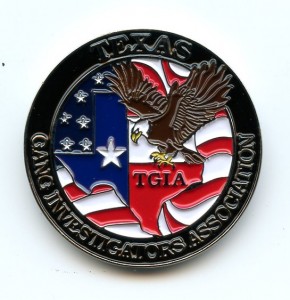
2014 TGIA Conference Coin
Unfortunately, there are still people in denial about how serious the gang problem across America is and how relationships between gangs and cartels are so heavily intertwined. America’s war on drugs is only viewed as successful by government officials with little grasps on reality or are trying to keep their jobs. The Secretary of Homeland Security testified before Congress that our borders were completely safe. Talk to the dedicated men and women in law enforcement who daily risk their lives and you’ll learn that fighting the drug war, stemming the flow of drugs, is similar to going to the beach and trying to hold back the waves of the ocean. You hold back part of one wave while the remainder simply flows around you.
All along the US border, ranchers live in daily fear of gang organized drug caravans coming across their land. South Texas Sheriffs have testified to the overwhelming problems their departments face with the increasing violence against families living along the border.
The gang problem only continues to grow. A majority of gangs outside of prison are controlled by gangs within our prisons. Gangs such as MS-13, who pride themselves on merciless revenge and cruel retributions, send enforcers to their upstart gangs throughout the states to teach them how to properly be members. Other words, how to be more vicious.
The times have definitely changed. The codes that criminals such as the old Mafia families lived by are long gone. Now gangs are comprised of younger, more restless thugs who view violence as the ultimate action. The drug cartels murdered 35,000 people in Juarez, Mexico in the last four years. Innocent people were killed and have disappeared. Decapitation became a cartel gang trademark. Stateside gangs wanting to be like the “big-boys,” have followed suit even to the point of making ‘snuff videos’ of their murders.
Do the research yourself if you still believe there isn’t a problem. In Houston, you can go to Stop Houston Gangs.org and view some of the gangs we have. It’s nothing to be proud of, but it’s reality.
Gangs are bullies. They serve no purpose in life except to further destroy our society like a cancer spreading through one’s body. They make whole communities live in fear. They steal, rob, and murder innocent people. They cost taxpayers billions of dollars yearly. And they respect nothing but further violence.

Gang Member
What can be done about gangs? First, understand there is a problem. Support your local law enforcement by reporting suspicious activities in your neighborhoods. Talk to your neighbors and watch out for each other.
Keep your children away from gangs as best possible by talking to your kids, letting them know they are loved and encourage their education in schools. Go to
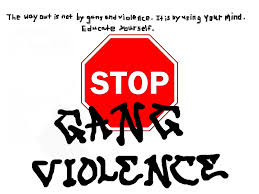
Stop Gang Violence
their schools and talk to administrators about school bullies. The school boards generally flat deny that any problem exists, but when you are persistent, they will act—even if it means you must go to the media about the school board. When your kids think being “gangsta” is cool, let them know what losers “gangstas” really are. And most of all, pay attention to what your kids do on the Internet. Be a parent before being their ‘buddy.’ Don’t let your child commit suicide before you learn a problem existed.
Like “Ringo” DeLeon, I hate bullies too.
* * * *
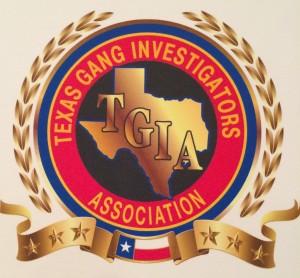
Texas Gang Investigators Association
Before I close, I wish to express my gratitude to the men and women of the Texas Gang Investigators Association for the dangerous work they daily perform on behalf of the citizens of our great state, as well as for our magnificent country. Teachers and law enforcement related personnel do not receive adequate payment for the critically important work they do, especially when compared to the frivolous mega-salaries of sports figures today.
Organizing an educational, informative conference such as the Board of T.G.I.A. does each year, is to be commended. The overall planning involved is astounding and the Board’s efforts are displayed in the quality of their conference.
Thank you, Mr. Ringo DeLeon, President of T.G.I.A., Mr. Patrick Natividad, 2nd Vice President of T.G.I.A., and Mr. Paul Zamarripa, Director, Pos.1, South Region, of T.G.I.A., for your friendship, hospitality, and my further education into the world of gangs. 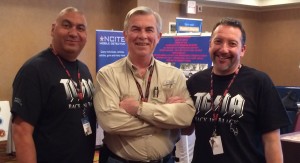
And special thanks go to Mrs. Janelle Zamarippa and Mrs. Natividad for our discussions and the work I observed you tirelessly perform each day for the benefit of T.G.I.A.
Regards,
Glenn Starkey

You never know what you will see at a gang conference…
by Glenn | Jul 7, 2013 | Crime, Law Enforcement, Life
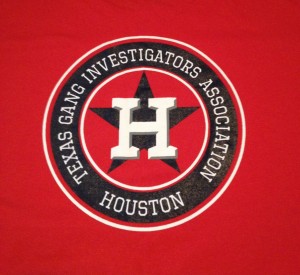
Narcotics trafficking, human smuggling, weapons smuggling, home invasions, contract hits, prostitution, assault, theft, murder and prison are only part of the curriculum you undergo from the University of the Streets. In this school, passing grades on tests means you survived to live one more day. As for graduation, when you have to constantly watch your back because of the work you’re involved with, and you trust very few people (especially whatever they say), then you’ve earned an education few others will have.
Who are these graduates? They are the men and women of law enforcement and the criminal justice system who daily work in the world of violent gangs, organized crime, and prison systems. They are members of the Texas Gang Investigators Association, as well as hundreds of others across America in this field. They have my respect—and if you knew them as I do and knew what they daily endure, then they would earn yours too.
I was recently invited to the TGIA Conference in Houston to sign my books. It was my second year to be honored with an invitation by Paul Zamarripa, TGIA Director, Pos.1, South Region, and I wasn’t about to miss the opportunity. Although I never worked gangs while in law enforcement as they now do, we at least spoke a common language about the streets and life that most citizens will never comprehend, if they are fortunate. Old friends such as Patrick Natividad, TGIA 2nd Vice President, and others from last year stopped by to say hello and talk about my books they had bought. New friends were made too such as conference attendee Erik L. Larson, who I learned is also the author of “Lone Star Daybreak.”
The week-long conference always has a prestigious list of national speakers representing all levels from federal agencies to state and county offices.  And the agenda covers—well, sorry, but that’s not open for public distribution. But, I am at liberty to discuss some of the gang related problems confronting law enforcement and our society today.
And the agenda covers—well, sorry, but that’s not open for public distribution. But, I am at liberty to discuss some of the gang related problems confronting law enforcement and our society today.
When I speak of ‘gangs’ I’m not simply talking about a group on motorcycles wearing their ‘colors,” or a group of ‘wannabe gangstas’ standing around with their baseball caps sideways, talking street trash, bobbing as they walk, and flashing gang hand-signs they made up. No, I’m discussing the organized, violent groups from Mexican drug cartels to every prison we have. They are located in rural areas, small towns, as well as major cities. These are the people psychologists would have a field day with trying to understand what makes them tick, all while our tax money and court systems must deal with their bloody crimes.
Where does the organization and leadership of these gangs stem from? Primarily, within our prisons. The prison gangs direct outside operations from the comfort of their cells. If and when released from prison, gang members connect with outside members, all while maintaining their inside connections. The majority of gangs have legitimate businesses for their money to flow through, and the spider-web of their organized crimes steadily expands right under everyone’s noses—often next door without your realization.
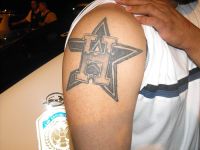
Houston Astros Logo
Where do they set up shop? Quick answer: everywhere. Operations are controlled from within our prisons, but a large segment of the gangs on the outside have left the big cities to set up shop in rural areas. Think about it a moment. Why stay in the big city where law enforcement has a multitude of resources to hound you, when you can move to smaller communities throughout the state that don’t have the budget or manpower to hamper your operations? If you stay under the radar by not drawing attention to yourself, you can do whatever you want, especially when you have the money to finance your operations. Most rural law enforcement agencies don’t have the budget to devote to a gang unit, nor are they really inclined to do so until forced into it. There is another unfortunate aspect to this too; dirty cops, those who work both sides of the street per say. I’m sorry, but it happens. Whether they were a federal agent on the border or a deputy riding desolate county roads, the intoxication of big bucks has been many a downfall.
So, who are these gangs? They are Tango Blasters, the Texas Syndicate, Barrio Azteca, the Texas Mexican Mafia, and more. The Tango Blasters were born in the 1990’s in Texas prisons and have rose to the largest gang membership. Some say 11,000 while other data places them at 14,000, even up to 100,000. To be a member, you have to have done prison time—but, there are the younger ‘Blasters’ that formed and haven’t done time yet. They want to be recognized, believe they can bypass the prison time rule for true membership, and do everything they can, drawing attention to themselves which is not the actual Tango Blaster modus operandi. Therefore, the ‘true’ Blasters have to come in, straighten them out by force, and teach them gang respect. 
The Tango Blasters are organized, yet unorganized. They don’t have a formal structure, don’t believe in having rules, no one tells anyone what to do, yet they receive directions from their leaders in prison and remain an entity. Odd, isn’t it? They don’t have a specific leader in each affiliated gang outside of prison yet they are divided into ‘Blaster’ gangs in every major Texas City: Houstone (it’s spelled this way for a reason) or “H,” Dallas or “D,” San Antonio or ‘SA,” etc.
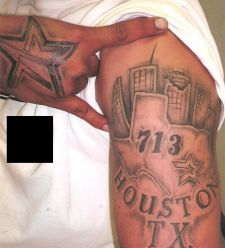 How do you recognize a Tango Blaster? This is another problem. You can’t unless you really know what you’re looking for. Their gang markings, or ‘tatts,’ are area code numbers or sports team logos of the major cities. For example, Houstone Blasters (the “e” is added on by the gang) use the Houston Astros star. They wear all the shirts and caps with the open sided star of the Astros baseball team for identification. That means they blend in with thousands of other Houstonians wearing the same regalia and tattoos! But look for the word “Houstone” and you are probably looking at a ‘Blaster.’
How do you recognize a Tango Blaster? This is another problem. You can’t unless you really know what you’re looking for. Their gang markings, or ‘tatts,’ are area code numbers or sports team logos of the major cities. For example, Houstone Blasters (the “e” is added on by the gang) use the Houston Astros star. They wear all the shirts and caps with the open sided star of the Astros baseball team for identification. That means they blend in with thousands of other Houstonians wearing the same regalia and tattoos! But look for the word “Houstone” and you are probably looking at a ‘Blaster.’
Rather than solely write about Tango Blasters, I want to mention another group I was surprised to learn of: Juggalos. Yes, you read correctly—and no, it doesn’t refer to a gang of big-breasted women.
Folks, you’re going to have to look this one up on the Internet. There are different levels of Juggalos which range from people that simply enjoy acting crazy while  dressed as a clown, to the more radical ones who cause harm and commit crimes. Yes, again you read correctly. They paint their faces in the manner of a circus clown like the Joker in a Batman movie. Their logo or image is a clown running around carrying a meat clever. Women in the group are referred to as ‘Jugga-hos’… I thought I was being kidded when a man from the State Attorney General’s office began talking about Juggalos, but the group is real. Honest. Search “Juggalos” and see what I mean. They have ‘gatherings’ which have vague resemblances to the old days of Woodstock. (Warning: If you decide to perform an online search, don’t be surprised at the photos you will see. Due to some nudity, you may not want children around your computer when you get to the ‘gathering’ photos.)
dressed as a clown, to the more radical ones who cause harm and commit crimes. Yes, again you read correctly. They paint their faces in the manner of a circus clown like the Joker in a Batman movie. Their logo or image is a clown running around carrying a meat clever. Women in the group are referred to as ‘Jugga-hos’… I thought I was being kidded when a man from the State Attorney General’s office began talking about Juggalos, but the group is real. Honest. Search “Juggalos” and see what I mean. They have ‘gatherings’ which have vague resemblances to the old days of Woodstock. (Warning: If you decide to perform an online search, don’t be surprised at the photos you will see. Due to some nudity, you may not want children around your computer when you get to the ‘gathering’ photos.)
 So, what is the answer to gang violence other than obtaining your Concealed Handgun License?
So, what is the answer to gang violence other than obtaining your Concealed Handgun License?
There are multiple answers to this. Assist and support your local law enforcement agency by reporting crimes. Educate yourself on problems in your area. Talk to your neighbors. Watch out for each other. The Houston Police Department has a gang taskforce website where information can be submitted and you can learn more about the problems: www.StopHoustonGangs.org. Start becoming aware of the crime in your community. Don’t let the sides of your building be covered in gang graffiti. Report them to the police then paint over them. It may take several coasts of paint, but eventually the gangs will stop using the sides of your building or fence as a canvas. Whether you realize it or not, the majority of the crimes you hear about on your local news broadcast are related to gangs.
Gangs are violent. They infect our society and destroy our children. Anyone can be a victim. I read a news article about a 14 year-old boy walking by a house, pulled a pistol out and shot at the man sitting on a porch, rocking an infant. The bullet struck the baby, killed him, and passed through to the father’s shoulder. The boy wanted recognition in order to join a gang.
Gangs easily reach across borders and state lines. They smuggle humans, drugs and weapons. They promote forced prostitution, make contract hits, perform violent home invasions…the list goes on.

Juggalo Gathering
And don’t judge a book by its cover. Simply because someone has tattoos all over their body doesn’t make them a gang member or a member of the ‘Yakuza.’ I say this because one of the conference attendees was covered with ‘tatts’ except for a small portion of his face. My friend, Rhonda Chevalier, TGIA Director, Pos.1 of the Central Region said he was one of the politest men she had ever met.
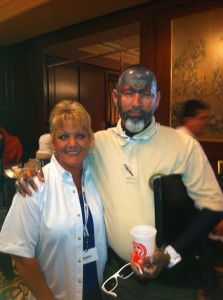
Rhonda Chevalier and Attendee
One of the best ways to keep your children out of gangs is to love them, talk to them, educate them, let them know they are important, and let them know gangs are a dead-end street. According to an old LAPD statement, 60% of gang members will be dead or in prison by age 20.
Thank you, TGIA, for sponsoring such educational law enforcement conferences. I wish every department in Texas could send at least one representative. The knowledge is valuable.
Sincerely,
Glenn
-

- Paul, Glenn, and Patrick.

No Gangs…

Corruption

Crime is a Dead-End Street
by Glenn | Jul 6, 2012 | Crime, General, Law Enforcement, Life
 There are times when reality hits home, gives you a wake-up call, and leaves you with the realization the dirty side of life still exists even though you may have forgotten or chose to ignore it. Some people don’t have the luxury to forget. They work it every day, seemingly living it because they must. It’s their job. Such are the men and women of the T.G.I.A., Texas Gang Investigators Association.
There are times when reality hits home, gives you a wake-up call, and leaves you with the realization the dirty side of life still exists even though you may have forgotten or chose to ignore it. Some people don’t have the luxury to forget. They work it every day, seemingly living it because they must. It’s their job. Such are the men and women of the T.G.I.A., Texas Gang Investigators Association.
After reading my novels, Mr. Paul Zamarripa, T.G.I.A. South Region Director, Position 1, contacted and invited me to attend their conference in San Antonio, Texas. That was quite an honor for me. Considering my former experience as a law enforcement officer, he believed it would be a good opportunity to present something different to the attendees; have me sign my books, talk with everyone, and allow them to see there can be life outside of their daily jobs which are mentally grueling.
Of course I accepted! What author wouldn’t? So for two full days I signed books, met old friends, people engaged in gang investigations and enforcement, and made new friends – one of which was Mr. Zamarripa.
Were the 750 conference attendees all cops? No. They ranged from federal agencies of all levels, constables, state, county and municipal law enforcement, and parole/probation officers to school counselors and court administration. Yes, I probably missed someone in that list of attendees. But as you can see, it takes such a spectrum of people, working hand in hand, to address today’s growing problems with gangs.
There was a time long, long ago when you said the word “gangs” and only images of leather-vested motorcycle riders and teenagers in neighborhoods with aerosol paint cans came to mind. The majority of the public never came in contact with them. Fast forward ahead and now everyone across our nation and in foreign countries is infected with a mounting crime rate rising from street thug gangs to violent drug cartel involvement. Big cities to small country towns, the types of crimes related to them seems endless: theft, burglary, drugs, rape, prostitution, kidnapping, assault, murder, and so on. And there are no barriers when it comes to age and social economic status as well. Children to adults are recruited, and the poor from slums and barrios to the college educated crowd living in well-to-do neighborhoods are brought into the fold.
What lies at the base of the gang problem? Money, economics; the list of reasons continues but those two are the meat and potatoes of the issue. And solving gang problems that have such far reaching tentacles into the criminal underworld often feels as if you are at the beach trying to hold back the waves of the ocean. 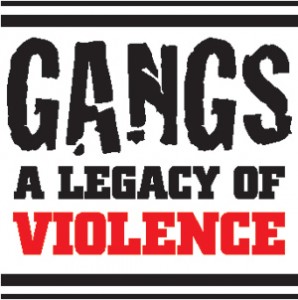
When drug cartels have enough money to recruit whole units of deserters from Mexican Army special forces units to do their violent bidding, they certainly have no qualms in hiring stateside ‘wannabe-gangstas’ or organized gangs to run dope and make hits on selected targets. Doing so keeps the cartel’s hands clean.
This is where the men and women of the T.G.I.A. come into play. They don’t just work ‘9 to 5’ and walk away at the end of the day. They live it ‘24-7’ and shift between the cruelties of the gang world and their home life, constantly struggling to maintain their sanity and a positive outlook on society. Their phones ring day and night and they are often called away for investigations while enjoying a little time with family. That’s one reason divorce rates are high in police work. While I was at the conference I listened to probation officers getting calls about parole violators, and investigators talking to patrol officers about certain ‘tats’ on a suspect.
 Conferences are important for several reasons – networking, sharing intel, learning from one another – earning educational hours required by the State of Texas as part of their continuing education to retain their licenses – but to me, most of all, it gives them some down time to clear their heads, especially when you are not working undercover and feel you need to always dress the part of being a gang member. Like patrol officers and detectives working the streets, it’s easy to get wrapped up in the ‘us versus them’ syndrome whereby it’s the police against everyone outside of law enforcement because all you see is the crap side of life and wonder if anyone good is left other than another cop.
Conferences are important for several reasons – networking, sharing intel, learning from one another – earning educational hours required by the State of Texas as part of their continuing education to retain their licenses – but to me, most of all, it gives them some down time to clear their heads, especially when you are not working undercover and feel you need to always dress the part of being a gang member. Like patrol officers and detectives working the streets, it’s easy to get wrapped up in the ‘us versus them’ syndrome whereby it’s the police against everyone outside of law enforcement because all you see is the crap side of life and wonder if anyone good is left other than another cop.
The stories these people can tell you about gang violence and activities and working the streets would make most authors’ crime novels look like kindergarten books.
Take the time to browse various websites of your local law enforcement such as Stop Houston Gangs and related associations such as the T.G.I.A. Read about the crimes gangs commit and how they operate. See for yourself how big the problems truly are. After all, the end product of their criminal acts affects your tax dollars!
What can you do to help? First, start by telling your children they are loved – and talk to them. Have conversations with them about problems they see and may be confronted with in school or in the neighborhood. Don’t wait until your children are teenagers. Start talking to them when they are much younger.
Gangs are a subject which could be studied for semesters in a classroom setting and you still wouldn’t learn all there is to know. So my hat’s off to the members of the TGIA, as well as all law enforcement related personnel, for their commitment to keeping our streets clean.
And my thanks to Mr. Paul Zamarippa for the invitation which allowed me to learn about this association.
Glenn


























